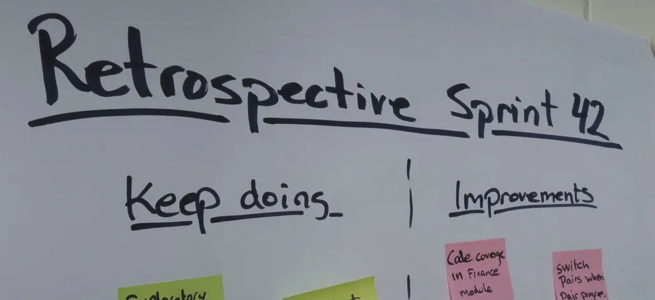How to Run Effective Project Retrospectives

Project retrospectives are a vital tool for continuous improvement, allowing teams to reflect on their experiences and identify ways to enhance future performance. However, a poorly run retrospective can feel like a waste of time or even breed frustration. To ensure your retrospectives are both effective and impactful, you need a structured approach, clear goals, and a commitment to action.
Here’s a step-by-step guide to running successful project retrospectives, complete with practical tips and common pitfalls to avoid.
What is a Project Retrospective?
A project retrospective is a structured meeting where the project team reflects on what went well, what didn’t, and what could be improved in future projects. The goal is to foster a culture of continuous learning and to build on past experiences.
Why Are Retrospectives Important?
- Improvement: Identifies actionable steps to optimize processes.
- Team Alignment: Promotes collaboration and shared understanding.
- Accountability: Encourages ownership of both successes and failures.
- Morale Boost: Provides an opportunity to celebrate achievements.
Steps to Run an Effective Project Retrospective
1. Set Clear Objectives
Define the purpose of the retrospective upfront. Decide if it will focus on the entire project, a specific phase, or particular challenges.
Example Objective: “Identify process improvements for managing cross-functional dependencies in our next sprint.”
2. Create a Safe and Inclusive Environment
A successful retrospective requires honest feedback. Team members must feel safe to share their thoughts without fear of blame or criticism.
- Tip: Start by emphasizing a “blame-free” approach. For example, say: “We’re here to improve the process, not point fingers.”
- Facilitation: Encourage quieter team members to share, and ensure no one dominates the discussion.
3. Use a Structured Framework
A clear structure helps keep the discussion focused and productive. Popular frameworks include:
a) Start-Stop-Continue
- Start: What should the team start doing?
- Stop: What should the team stop doing?
- Continue: What is working well and should continue?
b) The 4Ls
- Liked: What went well?
- Learned: What did we learn?
- Lacked: What was missing?
- Longed For: What could have made the project better?
c) Mad-Sad-Glad
- Encourage team members to express what made them frustrated (mad), disappointed (sad), or happy (glad).
Tip: Choose a framework that aligns with your team’s culture and the retrospective’s goals.
4. Collect Feedback in Advance
To save time and ensure thoughtful input, ask team members to share their thoughts before the meeting. Use tools like digital whiteboards, forms, or survey apps.
- Example Prompt: “List one thing that worked well and one area for improvement during the project.”
5. Facilitate an Engaging Discussion
Kick off the retrospective by reviewing the agenda and reminding everyone of the meeting’s purpose. Guide the discussion to ensure it stays on track and includes actionable insights.
- Use Visual Aids: Tools like Miro, MURAL, or Trello can help visualize ideas.
- Timeboxing: Allocate specific time for each section to avoid running over.
6. Identify Actionable Items
The most valuable retrospectives result in concrete actions. After discussing key takeaways, collaboratively decide on next steps.
- SMART Actions: Ensure actions are Specific, Measurable, Achievable, Relevant, and Time-bound.
- Example: “Document a checklist for handoffs to QA by the end of next week.”
7. Assign Ownership
To ensure follow-through, assign owners to each action item. Without clear accountability, even the best ideas can fall by the wayside.
8. End on a Positive Note
Close the retrospective by celebrating successes and expressing gratitude for the team’s contributions. Ending on a high note helps build morale and reinforces a culture of collaboration.
Common Challenges and How to Address Them
1. Lack of Engagement
- Challenge: Team members may not participate actively.
- Solution: Use icebreakers, rotate facilitators, or make the format interactive with gamification.
2. Blame Culture
- Challenge: Discussions become accusatory or defensive.
- Solution: Set ground rules for respectful communication and focus discussions on processes, not individuals.
3. Vague Outcomes
- Challenge: Retrospectives end with unclear or generic action items.
- Solution: Push for specificity and assign clear ownership to actionable steps.
4. Inconsistent Follow-Through
- Challenge: Actions from retrospectives are forgotten.
- Solution: Revisit action items in regular team meetings to track progress.
Tools to Enhance Retrospectives
- Digital Whiteboards: Miro, MURAL, FigJam
- Survey Tools: Google Forms, Typeform
- Retrospective Tools: FunRetro, Retrium
- Task Management Tools: Herdr, Trello, Asana
Benefits of Regular Retrospectives
- Continuous Learning: Teams refine their processes with each project.
- Stronger Collaboration: Regular retrospectives foster open communication and teamwork.
- Increased Efficiency: Actionable insights lead to streamlined workflows.
- Higher Morale: Celebrating wins boosts team confidence and satisfaction.
Conclusion
Project retrospectives are a powerful tool for growth and improvement when done correctly. By following a structured approach, fostering a safe environment, and focusing on actionable outcomes, you can transform your retrospectives into a catalyst for team success.
Remember, the value of a retrospective isn’t just in what’s discussed during the meeting—it’s in how those insights are applied to future projects. Stay committed to continuous improvement, and your team will reap the rewards.







